Modern chemistry makes building facades more and more attractive. Old oil-based exterior paints have long been forgotten. With the development of the technology of water-based polymer paints, it turned out that the walls of the facade of a house do not have to be disfigured with a cement "fur coat" or faded Soviet whitewash, water-based paint for exterior works will cope with the decoration much better.
Requirements for facade paint

Often in the minds of people far from the intricacies of the chemistry of water-based materials, there is a stereotype that such paint should be easily washed off with water. However, the main property of water-based paints is the ability to maintain the applied paint layer after drying, even under the influence of moisture or rainwater.
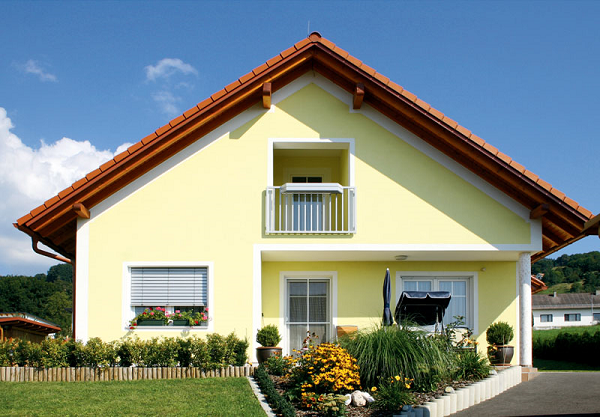
What are the water-based paints for outdoor use?
The wide range of colors and shades contributed to the widespread use and distribution of water-based paints for decorating external walls. The pigment retains its properties (saturation and color) even 10-12 years after being applied to the outer surface of the walls.
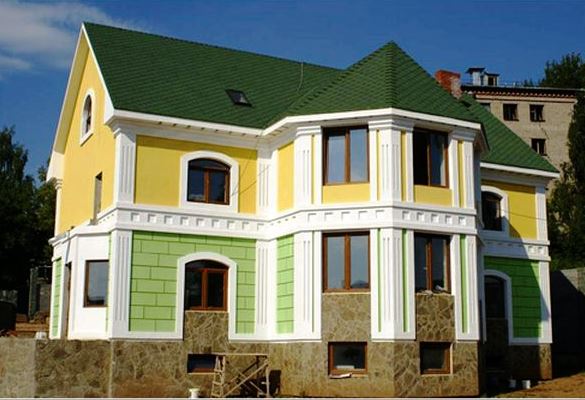
The main enemy of any paintwork was and remains moisture and water vapor. It was the water that caused the thick and durable layer of oil paint to bubble up on the outer walls. The water-based finish passed water vapor through itself, like through a sieve, without losing adhesion to the wall. The water base with additives that improve wetting penetrates deeply even into the concrete surface, making the adhesion strong and durable.
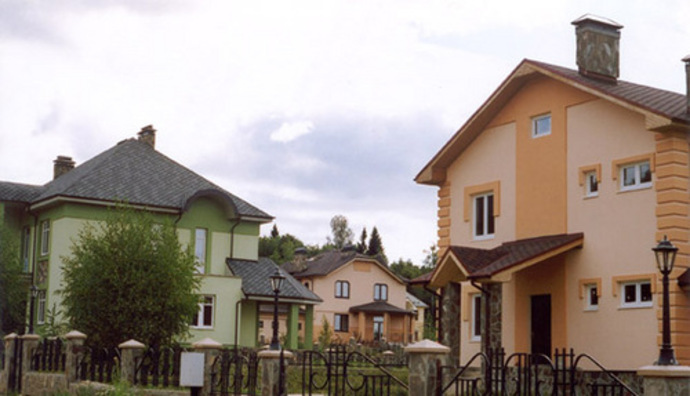
Several basic types of water-based materials are available for wide use in decoration:
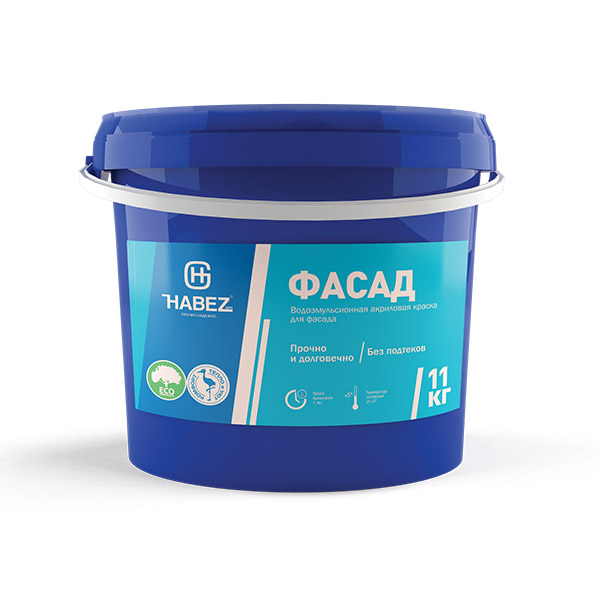
Most of these paints have a neutral white base. This allows you to accurately select the desired shade using toners, dyes.
Advice! When adding a dye to a white water emulsion, thorough mixing and curing is required for several hours.
The use and application of water-based paints
The applied coat of external water-based paint will appear slightly darker until it is completely dry. After the water has dried in a thin layer of the applied water emulsion, under the influence of atmospheric oxygen, polymerization processes occur, due to which the substances dissolved in water turn into a strong thin film.

Facade painting requires that the exterior walls are free of dust and dirt. In theory, they do not affect the ability of the material to adhere to the substrate, but residues of building materials on the surface of the walls can lead to the formation of stains and disrupt the uniformity of the water-based layer.
A regular garden sprayer can help prepare the exterior walls well. The powerful spray jet of water gently flushes away dust and dirt. It is advisable not to use detergents, especially if the outer walls are supposed to be covered with light-colored water emulsion. If the dirt is heavy, try to remove it with a stiff-bristled brush, and only as a last resort use chemistry.
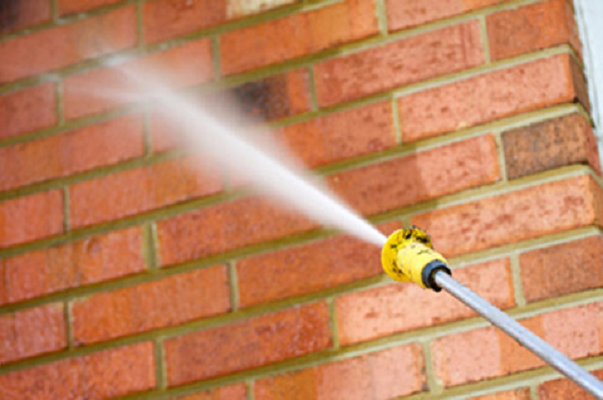
Even metal and wooden surfaces, as well as a surface made of stressed concrete, can be painted with certain types of water-based emulsion. In this case, it is recommended to use an acrylic-based primer before applying the water-based emulsion. Depending on the area of the surface to be painted, you can use a pneumatic spray gun, rollers, brushes. The color quality and color saturation does not depend on the coloring method, but it is possible that material consumption will increase. The average paint consumption for outdoor work will be from 120 to 160 grams per 1m 2.

Almost all types of water emulsion contain additives that prevent emulsion stratification, improve surface wettability and prevent the development of mold and bacteria on the walls of the house.





